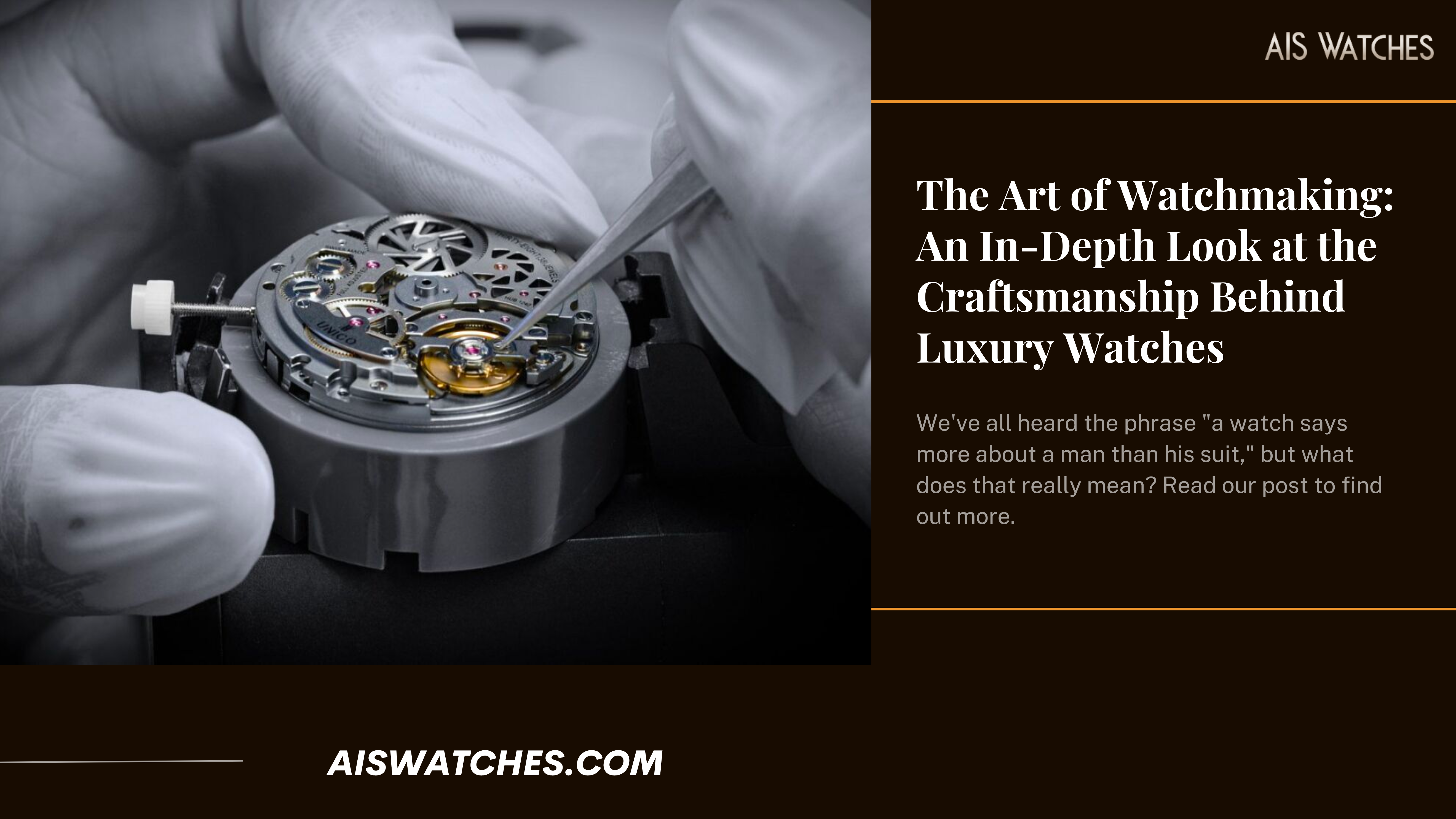The Art of Watchmaking: An In-Depth Look at the Craftsmanship Behind Luxury Watches
Posted by AIS Watches on Feb 13th 2023
We've all heard the phrase "a watch says more about a man than his suit," but what does that really mean? It means that watches are more than just shiny accessories. They have a story, and behind every luxury watch is an intricate tale of artisanship. Here's a look at how high-end timepieces are made, from start to finish.
The First Steps
The first steps in watchmaking are the most important. The case is the first thing to be made and it can take up to six months for skilled craftsmen to create a single case. It's also one of the most expensive parts of a watch, so it needs to be strong and durable enough to protect both your movement and dial.
The process begins with creating a mold out of plaster or silicone rubber based on drawings provided by designers or engineers who have already determined how large they want their model's dimensions to be--think wrist size! Then comes some serious hammering: After pouring molten metal into these molds (usually brass), workers manually beat them until they become solid forms with smooth surfaces after cooling down over time (we're talking hours here).
Once cooled off completely, these shells are sent back into production lines where more detailed shaping occurs before finally being painted black on both sides using lacquer paint mixed with graphite dust; this helps prevent corrosion from occurring later down line due out from brass being exposed directly onto skin contact areas such as wrists during normal wear activities such as swimming etcetera...

The Case and Crown
The case and crown are the two major components of a watch that make up its outer shell. The case is often made from precious metals like gold or platinum, but it can also be constructed from stainless steel or other materials. While some cases are simple in design, others feature elaborate patterns or ornate engravings.
The crown is used to set time on your watch manually; turning it clockwise will move forward through hours while turning counter-clockwise moves backward through minutes. Some watches have multiple pushers located around their faces (for example, one at 2 o'clock and another at 4 o'clock), allowing users to change both hour and minute settings simultaneously if they so choose--this is useful if you want to quickly move forward several hours without worrying about missing out on any seconds!
The Crystal(s)
The crystal is the glass on the front of your watch. It's either made from sapphire or mineral, and it determines how visible your timepiece will be in sunlight.
Sapphire has been used for centuries in jewelry because of its hardness and durability; it's second only to diamonds in terms of hardness (9 on Mohs scale). Because of this, a sapphire crystal offers better scratch resistance than mineral crystals do--but at a higher cost to manufacture.
Mineral crystals are less expensive than sapphires but still offer decent protection against scratches; they're made with zirconium oxide mixed with metals like titanium or nickel, which gives them their characteristic blue-gray tint when viewed under an ultraviolet light source such as black lights used by jewelers when examining gemstones like rubies or emeralds.
Dial and Hands
The dial is the surface of a watch face. It's usually made up of multiple parts, including hour markers and indicators for seconds. In addition to these components, there are also hands that indicate hours and minutes; seconds are indicated via an additional hand--or more than one if you're looking at something really fancy!
The shape of hands can vary widely depending on what type of watch you're wearing (and whether or not it's been customized by an artist). Some are straight while others curve gently around their dials; some have long tips while others end bluntly with no distinct point whatsoever. Hands come in many different materials as well: metal is common but wood used to be popular before plastic took over as our go-to material for everything from toys to clothing items like shoes and jackets!
Movement and Functions
The movement of the watch is the mechanism that keeps time. It's what makes a watch tick, and it consists of many different parts working together to keep your wristwatch working smoothly. The most important part is called an escapement; this regulates how fast or slow your watch runs by controlling how far each gear turns in relation to every other gear.
The escapement is usually made of either gold or steel--usually gold for high-end luxury watches because it's more resistant to wear than steel would be over time--and it can also include jewels within its construction (such as ruby). You'll find this piece inside all mechanical movements from Rolex to Patek Philippe watches; even though they may look very different externally, all mechanical movements share this same basic design.
When you buy a luxury timepiece, you aren't just buying an expensive piece of jewelry; you are buying craftsmanship.
Craftsmanship is the art of doing something well. It's about taking pride in what you do and being aware of all the little details that go into making something great. The best craftsmen don't just see their work as a means to an end; instead, they enjoy every step along the way -- from learning new skills and improving upon them over time, to creating something beautiful from raw materials with their own two hands.
The word "craftsmanship" comes from Old English craeft meaning skill or dexterity (and related words such as crafty). In modern usage it can mean any sort of skilled work: carpentry; metalworking; stone cutting; glassblowing etc., but traditionally refers specifically to woodworking (carpentry) or metalworking (forging).
From designing the movement and dial to creating the case and crown, there are many steps involved in making a luxury timepiece. Each one requires careful attention to detail so that your watch will last for years to come!
 Menu
Menu




